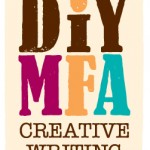Remember back in grade school when we used to cut up magazines and glue pictures together to make beautiful artwork? Well, believe it or not, collaging is actually a great way for writers to explore and express the mood of their project.
I actually learned the benefits of this technique when I was in art school. “Mood boards” were an integral part of each portfolio presentation and we learned the importance of capturing the essence of a project through imagery.
How do you make a mood collage? There are no rules. You can clip pictures from magazines or cut out letters and words in different fonts. It doesn’t even need to be concrete objects or words; you make a cool background by using printed fabrics or pretty papers. Use whatever inspires you. Lay out the pieces in a way that inspires you and move things around until you’ve got a design that you love. Finally, break out the glue-stick or glue-gun and start sticking the pieces down.
I happen to have Photoshop and I’m into that techie stuff so I actually do my collages digitally. That way I can print them out in different sizes, email them to people or even post them here on the blog. To that end, here are a few mood collages I’ve done. The ones included below are for products I’ve designed, but the same idea applies to mood collages for writing projects.
 |
| Mood collage for a road trip project. |
 |
| Mood collage for a tween fashion project |
 |
| Mood collage for a project representing the experiences of girls and women from different cultures. |
Homework: Set aside an hour sometime this next week to make a mood collage for your work-in-progress. Clip pictures from magazines or print images you find online and cut them up. If you like, while you’re clipping pictures and gluing, listen to some mood music that inspires your story. The idea with this project is to get completely immersed in the mood of your work-in-progress.
Once you’ve finished your collage, give it a place of honor in your writing space. You could even take a picture and share with us it on the DIY MFA FB page if you like. Can’t wait to see what you all come up with!
Now you tell me: what do you do to capture the mood of your current writing project?











 Call me Gabi (pronounced gah-BEE). I'm a writer, freelance teacher, and a lover of books and words. I'm also the instigator of DIY MFA. iggi's my sidekick, but he thinks he's the brains behind this operation.
Call me Gabi (pronounced gah-BEE). I'm a writer, freelance teacher, and a lover of books and words. I'm also the instigator of DIY MFA. iggi's my sidekick, but he thinks he's the brains behind this operation.
 ROW80 Check-In (2)
ROW80 Check-In (2) YA Cafe: Villains and Antagonists
YA Cafe: Villains and Antagonists Introducing Writer Fuel
Introducing Writer Fuel ROW80 Check-In (1)
ROW80 Check-In (1)